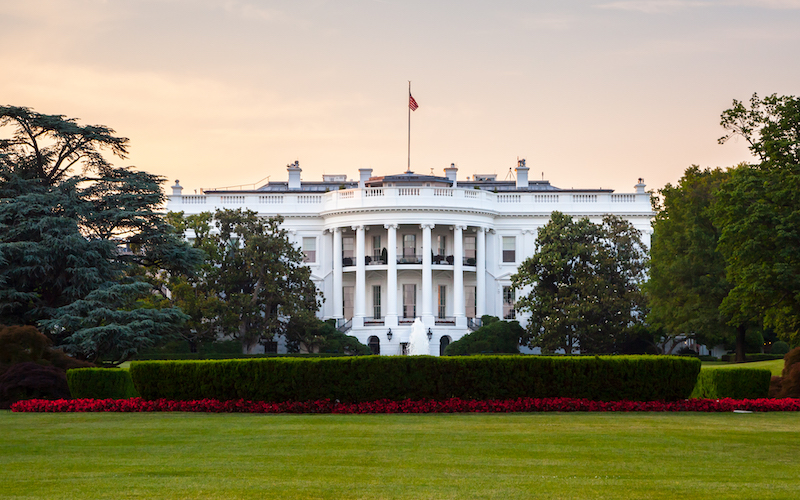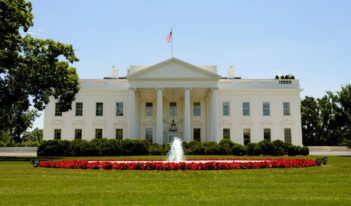
The Administration has taken an aggressive approach in using legal tools to advance its regulatory agenda.
In a recent essay, William Yeatman, a research fellow at the Cato Institute, takes issue with the central conclusions of our recent essay in The Regulatory Review, “Regulatory Rollbacks Have Changed the Nature of Presidential Power.” That essay of ours distilled the main findings of a longer research article we published last year in the Minnesota Law Review.
In both our essay and article, we showed that the Trump Administration made unusually aggressive use of three instruments: Congressional Review Act (CRA) disapprovals, requests that courts hold in abeyance pending cases challenging Obama-era regulations, and suspensions of final regulations. The Trump Administration has used these tools as part of a vigorous effort to roll back Obama-era policies.
As with other norm-breaking practices, such as the Democratic Party’s elimination of the filibuster in the U.S. Senate for the confirmation of executive officials and lower-court federal judges, and then the Republican Party’s elimination of the filibuster for U.S. Supreme Court justices, the aggressive use of rollback tools is unlikely to end with the Trump Administration. In the current age of tit-for-tat politics, future administrations are likely to push norms even further in an effort to unsettle their predecessor administration’s regulations.
As a result, we have argued that, in light of the long timeline for issuing regulations and for their judicial review, practices like those adopted by the Trump Administration will make it difficult for a one-term president to implement regulatory policies successfully. And a two-term president is likely to be successful only with respect to regulations issued in the first term.
Yeatman’s discussion of our piece is flawed. Most importantly, he wrongly attributes to us the view that the Trump Administration “has been too effective in rolling back Obama-era rules.” The claim in our article is far narrower and very different. We argue that the Trump Administration has been unusually aggressive in pushing the instruments discussed above.
Ultimately, however, in cases where judicial review was available, the Trump Administration has not been successful in rolling back Obama-era rules because of the shockingly poor analytical work that it has used to justify its deregulatory moves. Our article discussed this issue at length in connection with the one instrument—suspensions—that was amenable to litigation on the merits. With respect to this instrument, the Trump Administration lost almost across the board. More generally, the Trump Administration lost more than 90 percent of its regulatory cases, an atrociously bad outcome when compared to a loss rate of around 30 percent for prior administrations.
So, although the Trump Administration was aggressive in attempting to undo Obama Administration policies, it has so far largely failed in its efforts whenever those policies could be challenged in court.
And this pattern is likely to continue. Several of the Trump Administration’s most significant initiatives—such as the rollback of greenhouse gas standards for automobiles and for existing power plants—have been finalized only recently, in large part because of delays caused by the significant scrutiny of the defective analysis supporting the proposed rules. As a result of those delays, the rules are likely to be undergoing judicial review at the end of this presidential term. Because the final rules also exhibit serious analytical shortcomings, if a new administration takes office on January 20, 2021, it will have the option of either letting the courts decide the cases—in the hopes of a likely defeat of the Trump Administration’s policies—or seeking an abeyance of the pending litigation while these policies are modified. Having those options will likely ease the next administration’s job in rolling back those rules, as we explain in our article.
Ironically, the Trump Administration will have made it easier for its own regulatory policies to be undone, through the combination of its aggressive use of rollback tools and ineffective follow-through. Through the former, it has broken down norms that were previously in place, thereby making a future tit-for-tat response more likely. And as a result of the latter, it has both failed to accomplish its objectives and provided a telling reminder, useful to a future administration, of the consequences of bad analysis.
Yeatman also wrongly argues that the Trump Administration’s use of the three rollback instruments analyzed in our article was not exceptional.
With respect to the use of the CRA, Yeatman cannot dispute the numbers: 16 successful invocations in early 2017 as compared to a total of only one during the provision’s prior two decades. Instead, he resorts to a semantic quibble: the increase in rule repeals under the CRA should be attributed to the U.S. Congress and not the President. Yeatman appears to overlook the obvious point that these CRA disapprovals would not have become effective without the President’s signature and support. As we explain in our article, aggressive use of the CRA competes for Senate time with the confirmation of the new administration’s top political appointees and would be unlikely to happen during a period of unified government unless the President prioritized the former over the latter.
And, although Yeatman criticizes us for linking CRA disapprovals with “presidential strategy,” we are not alone in characterizing it that way. For example, in an article on the subject, Paul J. Larkin, Jr., senior fellow at the Heritage Foundation, observed that “by relying on…the CRA…President Trump has been able to eliminate regulations adopted during the last year of the Obama Administration.”
As to abeyances, Yeatman argues that the Obama Administration did the same thing using voluntary remands. We agree with him on the similarity between these two tools. But what was different in the Trump Administration was not what the tool was called but the aggressiveness with which it was used. In contrast to prior administrations where abeyances were sought only in cases that were at the early stages of the litigation, the Trump Administration sought abeyances in many cases that had already been briefed, including in one case where argument had already taken place. This pattern is well documented in our article, and Yeatman does not dispute it.
Finally, as to suspensions, Yeatman argues that “this tool does not seem to be novel” and points to an industry complaint about use of the tool in the Obama Administration. Our law review article acknowledges prior uses of suspensions—in fact it has a whole section entitled “Prior Uses”—but, as with the case of abeyances, we demonstrate that the Trump Administration made unusually aggressive and extensive use of this tool—a pattern that Yeatman also does not dispute.
In sum, Yeatman is wrong in arguing that the Trump Administration’s use of CRA disapprovals, abeyances, and suspensions was not exceptional. And he is also wrong in attributing to us the view that the Trump Administration was unusually effective in undoing the regulatory initiatives of the Obama Administration. Instead, the Trump Administration has provided its successor with a roadmap to undo its many poorly supported policies.
This essay is part of a five-part series, entitled Debating the Repercussions of Trump’s Deregulatory Agenda.





